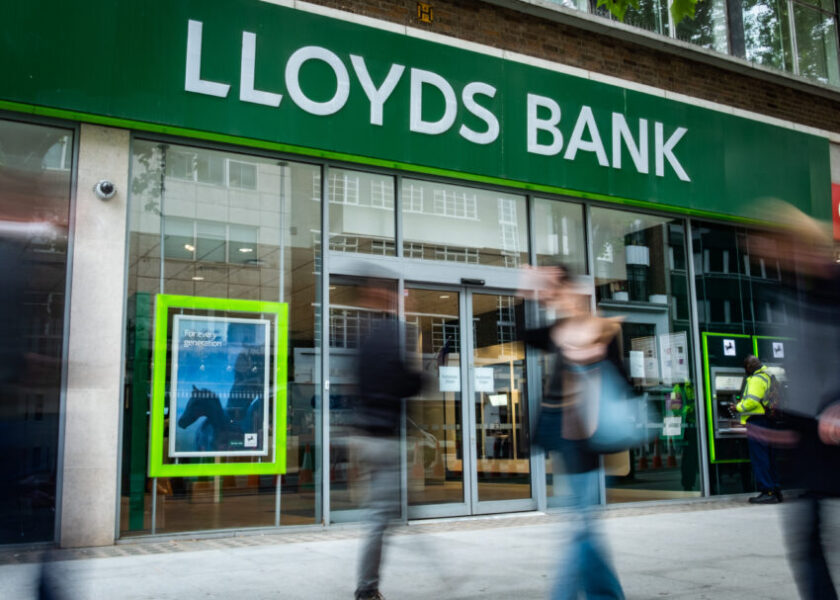Lloyds first quarter profits rose 46 per cent as the bank became the latest UK lender to see its bottom line boosted by a hike in interest rates.
The lender’s pre-tax profits came in at £2.3bn compared to £1.5bn the same quarter last year.
Charlie Nunn, chief executive of Lloyds Banking Group said: “The group has delivered a solid financial performance in the first quarter of 2023, with strong net income and capital generation, alongside resilient observed asset quality.”
The bank’s net interest margin – the difference between what it receives in interest payments and pays out to savers – widened to 3.2 per cent, helping net interest income swell 20 per cent to £3.5bn.
Lloyds maintained its full year guidance for its net interest margin at around 305 basis points despite the Bank of England hiking interest rates since the guidance was set. Since then, persistently high inflation means the central bank is expected to hike rates further.
Rising interest rates generally boosts banks’ coffers as they receive more in interest payments. Analysts at Jefferies said they saw “scope for this to be lifted to circa 310bps given higher swap rates and a 25bps policy rate hike since FY results” in February.
Lloyds chief financial officer William Chalmers said that the bank’s net interest margin was unlikely to widen further because the bank has been passing more of the rate hikes due to the competitive market.
“The base rate change…has been offset by competitive product pricing, both on the asset side in terms of mortgages, and on the liability side, in terms of savings,” he said, suggesting the bank had reached peak margin for 2023.
Banks in the UK have come under intense pressure in recent months to pass on higher interest rates to customers. Lawmakers allege that banks have been profiteering on customer inertia.
Looking forward, Nunn cautioned that “the macroeconomic outlook remains uncertain.”
The lender said it had seen “modest increases” in new arrears in some portfolios and flows to default, although the figures remain at or below pre-pandemic levels.
Lloyds reported an impairment charge of £243m, up £37m on the same period last year but below consensus estimates. It confirmed that asset quality remains “resilient”.
Hargreaves Lansdown’s Matt Britzman said: “Lloyds is a good barometer for the overall health of the UK consumer and its smaller businesses, and they’re proving remarkably resilient in the face of mounting cost pressures.”
In the aftermath of Silicon Valley Bank’s (SVB) collapse, deposits have been in focus. At Lloyds customer deposits were down £2.2bn in the quarter, with a larger £3.5bn reduction in current account balances. Deposits in its commercial banking arm meanwhile increased by £2.7bn.
Chalmers said he didn’t think the outflows were related to “safety concerns” but suggested it reflected a “competitive market.”
The results – the last of the UK’s major banks – came at a time of stress for the global banking sector. First Republic became the third bank felled in a little over a month and regional banks in the US faced a big sell-off yesterday.
Chalmers said the banking crisis has been a “significant event” in the US but said its impact on the UK had been “limited.”
“We have not really seen any particular impact on the UK sector. And we’ve certainly not seen any impact on Lloyds Banking Group,” he said.
The bank pointed to a “strong and stable” liquid asset portfolio and confirmed all of its assets hedged for interest rate risk.


